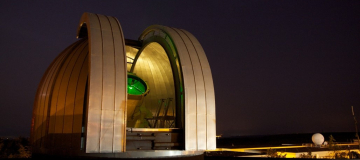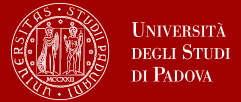
HyperSpace: satellite distribution of entanglement across the Atlantic
HYPERSPACE research project aims to create basis for intercontinental quantum network
Researchers from Europe and Canada want to jointly create the basis for an intercontinental network for quantum communication. The HYPERSPACE project will focus on the investigation of the distribution of entangled photons via satellite. The research project has now started its three-year term and involves partners from Europe and Canada including the University of Padua.
At short distances, entangled photons have already been successfully exchanged in various experiments. But intercontinental and thus potentially global exchange remains a challenge. This will be tackled within the new research project HYPERSPACE. Together, researchers from Europe and Canada want to create the basis for a Canadian-European connection. The strategic collaboration will focus on research into integrated quantum photonics and optical space communications with the goal of creating a satellite-based quantum network between the continents.
Entanglement distribution in space
Experiments are being conducted all over the world to exchange entangled photons over the longest possible distances, e.g., by means of free beams through the air or via optical fibers laid in the ground. However, the detector noise and the unavoidable losses in fiber-based transmission currently limit the range of terrestrial transmission to a few hundred kilometers. In the future, so-called quantum repeaters could enable entanglement even over longer fiber distances. However, researchers are still facing a number of technological challenges before a sufficient increase in range, as it would be necessary for a global network, can be realized. The solution: the direct exchange of entangled photons in space via optical satellite links.
The overarching goal of HYPERSPACE is therefore to further develop satellite-based quantum communications by appropriate experiments into scalable global quantum networks. To this end, HYPERSPACE encompasses research and innovation along the entire process chain of photonic quantum communication: from noise-resilient state coding, fully fiber-embedded and photonically integrated quantum light sources and free-space compatible state analyzers, to the implementation of advanced protocols facilitated, or even enabled by the use of entanglement in multiple degrees of freedom - so-called hyper-entanglement.
Eight partners from Europe and Canada
A total of eight partners from Europe and Canada are involved in the project: In addition to the Fraunhofer Institute for Applied Optics and Precision Engineering IOF (Germany), these are the Università degli Studi di Pavia and Università degli Studi di Padova (both Italy), the Commissariat à l'énergie atomique et aux énergies alternatives CEA-LETI (France), the Vienna University of Technology (Austria), the Institut National de la Recherche Scientifique, and the University of Toronto and University of Waterloo (all Canada). The research project is coordinated by Fraunhofer IOF.
The project is co-funded by the European Commission (within the Horizon Europe program) and the Natural Sciences and Engineering Research Council of Canada (NSERC) with 2.8 million euros. Fraunhofer IOF receives a share of 300,000 euros.
Applications in information technology and sensor technology
Quantum entanglement, once described by Albert Einstein as "spooky action at a distance," is now considered a key resource for the latest applications in information processing and sensing. A global quantum internet will enable significantly improved, previously even unthinkable applications, such as more precise synchronization of clocks, highly efficient cloud computing, or even highly secure data transmission using quantum cryptography.
In contrast to conventional cryptographic methods, which provide security through the computational effort involved in decryption, the security of quantum cryptography is based on physical principles.
About PaduaQTech involvement
Padua University has been among the pioneers of quantum communication in space, with the first quantum exchange in space obtained in an experiment coordinated by Prof. P. Villoresi in collaboration with the Nobel laureate Prof. A. Zeilinger, which was followed by many other works like the one showcasing single photon interference along a satellite-ground channel and the one extending Wheeler's delayed-choice experiment to space. A telescope was recently installed in a dome over the Information Engineering department allowing for satellite-quantum communication experiments directly from Padua. After many experiments exploiting entanglement (both in polarization and time-bin degrees of freedom) within the lab and many prliminary studies, the distribution of entanglement in space is one of the main targets of the Quantum Communication group, which becomes even closer with the participation to HYPERSPACE.






